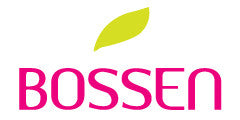What is Bubble Tea?
Exploring Bubble Tea: Past, Present, and Future
You might have seen the malted drinks in plastic cups with a bottom layer of mysterious round toppings and wondered, what is that? This new beverage craze is known as bubble tea, a cold and frosty Taiwanese drink that combines tea, creamer, and sweet tapioca pearls -- all sipped through a fun-colored fat straw. If you’re curious about what the bubbles in bubble tea are made of, it is basically extracted starch found in cassava roots, a nutty-tasting South African underground stem.
This tasty drink has so many names -- no wonder people get confused. Common names for bubble tea are boba tea, pearl tea, or tapioca tea. It is also dubbed as “boba nai cha”, “zhen zhou nai cha”, black pearl tea, BBT, PT, pearl shake, momi milk tea, QQ, and many more. Though there are several theories about where bubble tea received its name, the more common assumption is that the tapioca balls sitting at the bottom of the drink resemble bubbles. Another reason for the name could be that when flavor is added, and the drink is shaken up, it forms bubbles.
What is Bubble Tea?
The two forms of bubble tea consists of cooked tapioca pearls and iced milk tea or fruit tea base -- either black tea mixed with non-dairy creamer and sugar, or a shaken black/green tea with foam on top. They typically come in plastic to-go cups with sealed covers, which is partly why bubble tea is so easy to discern among other beverages. The unique seal aims to avoid spilling, and meanwhile to allow to shake the drink to blend the ingredients better.
Because bubble tea is so versatile, there are many variations in flavor and style. You can combine tapioca balls with a variety of teas, yogurts, iced slush, and smoothies. In Taiwan, locals have even started to expand the concept of bubble tea to other flavors including traditional local treats. Toppings such as coconut jelly, egg pudding, grass jelly, agar, and taro are often added to varying beverages such as oolong tea, flavored tea, soy milk, plum juice, and many other sweet drinks. You can even adjust the sugar and ice levels from 0%, 25%, 75% or 100%, so no matter what your taste preference is, you can always create your ideal bubble tea drink.

The History of Bubble Tea
Tapioca milk tea originated from Taiwan in the 80’s, but its beginnings are unclear. Although several tea companies claim to have created these chewy tapioca balls, two shops stand out from the crowd: Chun Shui Tang in Taichung City and Hanlin Teahouse in Tainan City.
Chun Shui Tang was considered one of Taiwan’s premier establishments for inventing the foam black tea in 1983. The shop’s founder, Liu Han-Chieh, came up with the idea of serving Chinese tea cold after visiting Japan -- where he saw coffee served cold. In 1988, Liu’s product development manager, Lin Hsiu Hui, accidentally came up with the idea of bubble tea when she mixed a Taiwanese dessert called “fen yuan”, a sweetened tapioca pudding, into her Assam milk tea.
The other origin theory is from the Hanlin Teahouse in Tainan City. The shop owner, Tu Tsong He, created bubble tea in 1986 by adding white “fenyuan” to create the appearance of pearls -- which is supposedly why the drink is also called pearl tea. However, Hanlin eventually changed the white tapioca balls to black, creating the current day bubble tea drink.
Both tea shops went to court over the creation of bubble tea, but neither had a trademark or patent over the popular drink. By the time the 90s came along, many other tea shops began adding bubble tea to their menu. When the automatic sealing machine was introduced in the late 90s, vendors began replacing the traditional lid with a new sealed cover -- making bubble tea what it is today as one of Taiwan’s most well-known staples.
A Growing Business and Global Trend
With bubble tea’s growing popularity, this frothy drink started spreading to several regions such as Asia, Australia, Europe, South Africa, and even the United States. Bubble tea businesses have not only been popping up in mainstream American shopping outlets and large food centers, it has also grown to become one of the most popular drinks worldwide among younger generations. With booming milk tea businesses such as ChaTime, Quickly, Gong Cha, CoCo Fresh, and Bubbleology, it’s no wonder why this market has already established such a large presence.
Bubble tea is not just a drink, it’s an experience that brings people of all different cultures and backgrounds together. Although there are many theories for its creation and why it’s so popular, the main reason why bubble tea is so distinctive is simply because it’s fun, collaborative, and delicious. Explore a variety of bubble tea combinations using Bossen teas and toppings, and be well on your way to making the perfect dessert.

